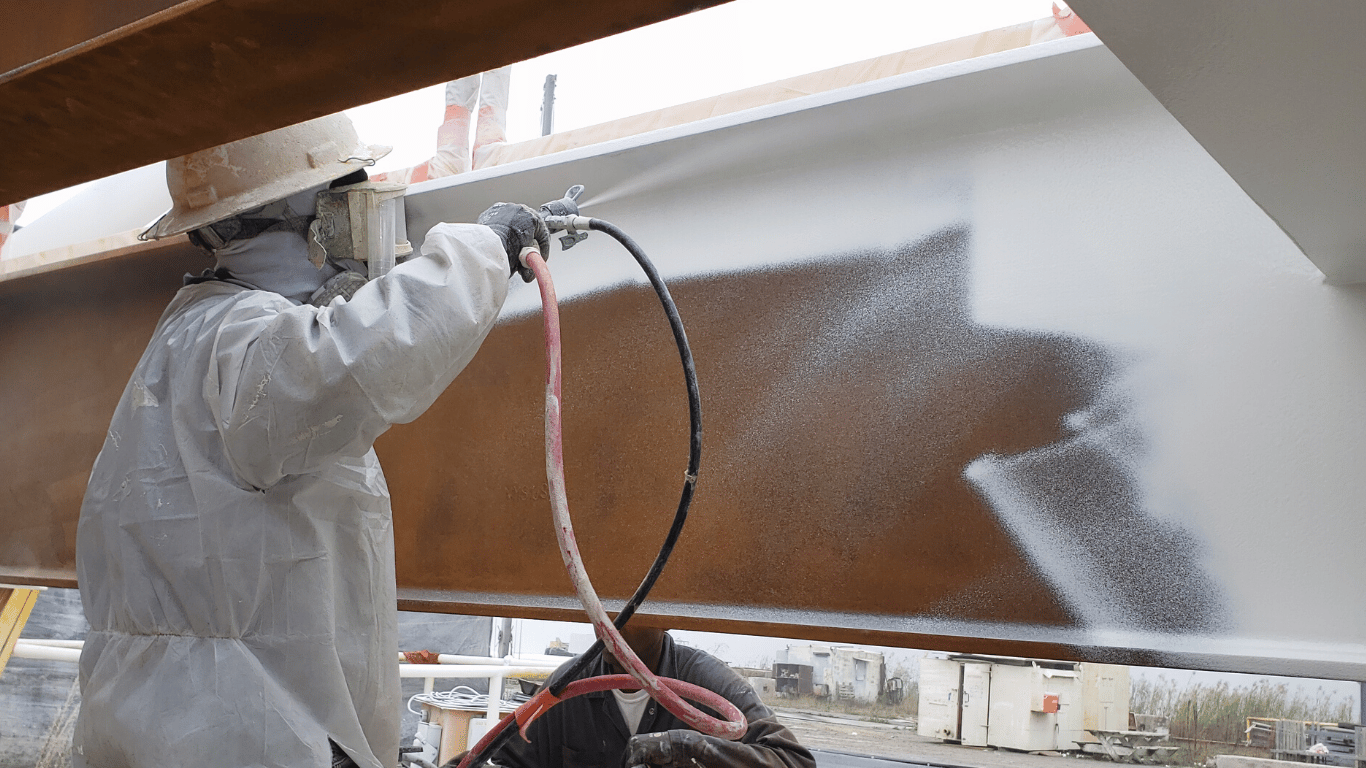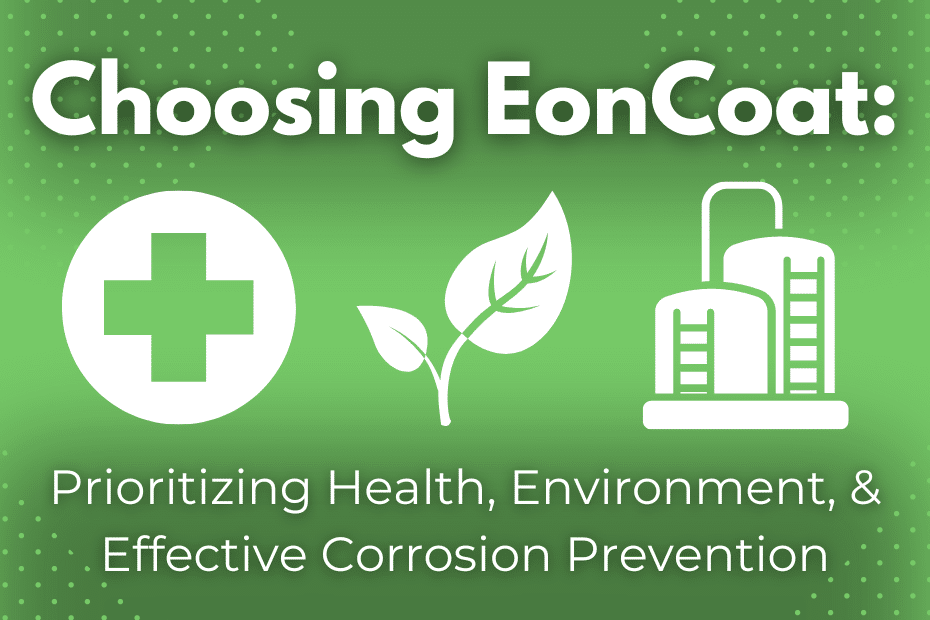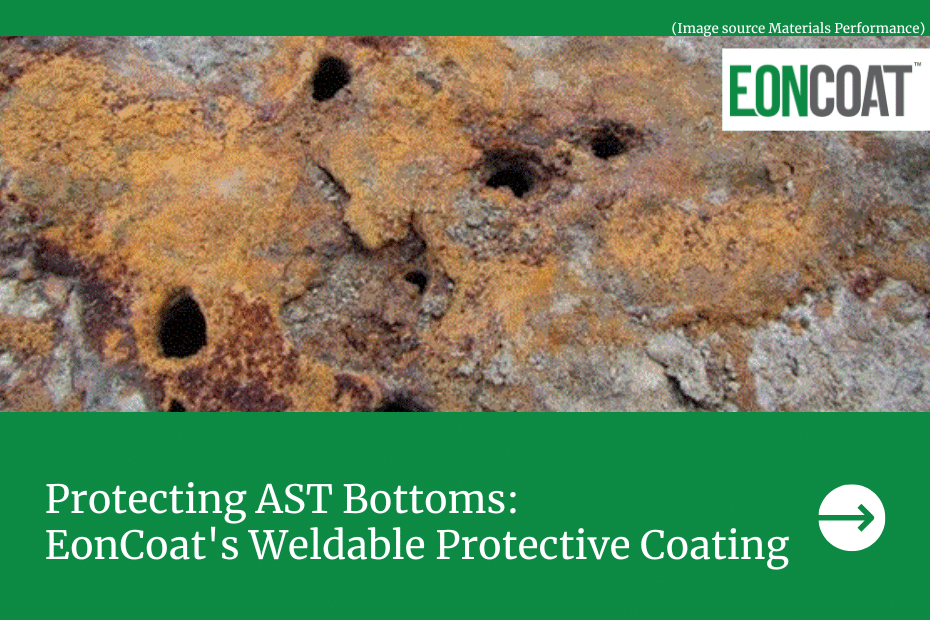EonCoat is a corrosion protection application unique from traditional methods. But how does it work? How does it compare to methods you may be more familiar with? We’ve put together this fast-fact list to give you an overview of the EonCoat product and what makes it different.
1. Two-Layer Defense
EonCoat is an easy-to-apply anti-corrosive primer that consists of two components: an acid and a base. By using a plural (2K) spray gun, these components combine before the coating touches carbon steel to create a two-layer defense: an iron phosphate alloy layer and an outer ceramic layer.
The patented acid component of EonCoat converts the steel surface top layer into inert iron magnesium phosphate, resulting in a permanent alloy layer to prevent corrosion. EonCoat then embeds a 20 mil-thick ceramic layer over the top, which serves as a phosphate reservoir for the steel surface. The phosphate reservoir will re-alloy the steel if the steel is ever gouged or damaged.
2. Eliminates Protection Gaps
Traditional coatings simply sit atop the steel surface. EonCoat, on the other hand, is pulled into the gaps and valleys of the applied surface, where it forms a chemically bonded alloy layer with the steel. Since the iron phosphate layer covers every part of the surface, there’s no concern of corrosive particles working their way between the surface and the alloy layer. In fact, no oxygen or moisture can pass through EonCoat’s alloy layer.
3. Self-Healing Approach to Corrosion Prevention
Traditional barrier coatings have a finite life and will inevitably need to be replaced. This is because barrier coatings simply lay over the surface, opening room for corrosion particles to penetrate underneath.
EonCoat isn’t a barrier coating. The ceramic phosphate layer protects the alloy layer by supplying reserve phosphate if ever needed. The ion phosphate alloy layer in turn protects the steel by never allowing it to come in contact with moisture or oxygen.
4. Abrasion-Resistant
Due to the outer ceramic layer, EonCoat is more abrasion-resistant than traditional epoxy coatings and paints. In fact, a Taber machine abrasion test found that EonCoat withstands more than 1,200 cycles before wear, compared to 250 for epoxy and 75 for paints.
5. Chemical-Resistant
EonCoat proves a very effective method of protection against both base and acidic chemicals. EonCoat withstands immersion in all bases except high concentrations of NaOH. It is also ideal for use in acidic environments with a topcoat because any acid that makes it past the barrier will get neutralized by the magnesium hydroxide in EonCoat. According to chemical resistance tests, EonCoat showed excellent resistance against chemicals including methanol, salt solutions, and xylene.
6. Fire-Resistant
EonCoat’s inorganic composition makes it fire-resistant, even to open flame exposure. EonCoat will only burn if the covered surface (i.e. substrate) starts to burn from intense heat exposure.
7. Ideal For Oil & Gas Applications
EonCoat is commonly used within the oil and gas industry, with the most common application being for petroleum storage tanks. Other EonCoat applications include:
- Above ground pipeline exteriors
- Power plant equipment
- Marine terminals
- Process equipment
8. No Special Equipment Needed
There’s no special equipment needed to use EonCoat — simply a standard industrial pump system and a plural (2K) spray gun. One pass of EonCoat typically yields 3 to 6 mil, and multiple passes can be made immediately. Twenty mils are the recommended layer thickness, though there’s no limit on the number of passes or layer thickness on any surface. EonCoat can be removed by grit media or sandblast.
9. Works on Existing Corrosion and Rust
Only a NACE 3 / SSPC-SP 6 commercial blast cleaning is usually needed before applying EonCoat to steel. NACE 1 or 2 blasts are unnecessary, as the best reactions with EonCoat actually occur in the presence of slight surface oxidation (i.e. flash rust).
10. No Special Disposal Requirements
Leftover EonCoat requires no special clean-up or disposal processes. Simply mix equal parts A and B to create the ceramic rock MgKPO4.2H2O. This can then be disposed of along with other rocks.
About EonCoat Training and Certification
We at EonCoat host training sessions at our facility or at your location. We’ll show your team how to properly apply EonCoat and how to recognize correct reactions. You’ll learn more about how companies around the world are using EonCoat. Other topics covered include equipment maintenance, troubleshooting, and in-depth training on the chemistry aspects of EonCoat. Two days of training are recommended.

Ready to Learn More About EonCoat?



